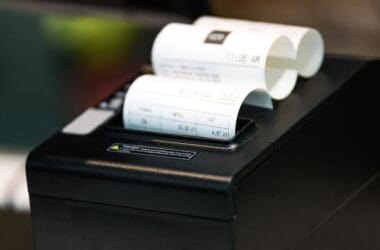Car Talk
I will be the first to admit that I’m not good at all with the mechanics of cars nor do I have a lot of interest in cars. What I care more about is having a dependable car that can get me from Point A to Point B. To bridge the gap of what I know and what I need to know, I rely heavily on regular maintenance, the car’s internal computerized alerts and warnings, the sounds and the feel of the ride, and AAA as my backup.
Just the other day, my brother let me know that the TPMS (Tire Pressure Monitoring System) alert showed up on his car. His car is a few years newer than mine, so I joked that newer cars tend to have more issues. It’s one of my lame jokes; the alert would never show up on my car because my 12-year old car didn’t come with that sensor.
A Leak in the Car Tire?
Well, the joke is apparently on me. Not long after, a family member noticed that one of my car tires seemed to look flatter than the others. I hadn’t noticed any performance issue, but after an inspection, I agreed with the assessment. Although it’s a little embarrassing to admit, I didn’t know how do to add air to my car tires. Although I am not one of those gals who’s afraid to get my hands dirtied, there just hadn’t been a need. I asked my brother to teach me how to do it when he got back from his trip. In the meantime, I docked my car for about a week.
Getting Assistance
My brother brought along his tire pressure digital gauge to the air pump at the gas station. He was surprised to find out that one of my tire’s PSI (pound per square inch) is in the single digit. He thought his gauge malfunctioned because the number was way below the recommended level. I suspect that the tire been leaking air the entire week that it had been docked. Afterwards, I read up on the topic and realized how fortunate I had been.
- The under-deflated car tire could have easily blown out. This can cause an accident and potential injuries to myself and others.
- Driving with under-inflated can significant reduce fuel efficiency, not to mention potential damages that can be inflicted on the car.
- I read from some post that suggested that filling the air when the tire has a low PSI is dangerous (as it could blow out?) I would love to know from car experts whether it is true or just an urban myth.
Unnerved by the precipitous drop on that one tire, I decided to take my car to the service department at the dealership the very next morning. I braced myself for some bad news. At a minimum, I was expecting either a replacement of car tires or some expensive repairs due to sustained damages. The result? The mechanic technician found a “nail” in the offending tire which caused the leak and patched it up.
Public Service Announcement
Because of this near risk and the information I learned, I wanted to share my experience as a public service announcement:
It’s a good idea to periodically check the air pressure on your car, keeping in mind that some reduced pressure is a natural occurrence due to the drop in temperature. If you have a car without a TPMS, you could buy yourself a tire pressure gauge for less than $10. I got myself a digital tire gauge from Amazon (note: affiliate link) to keep in my car for checking my tires periodically. Also, you should never over-inflate your tires. The recommended PSI level is printed on the sidewall on the driver side seat and it varies by car model.
Safety First
If I, as someone who is not very good with cars, can learn how to add air to my car tires, I think anyone can. With the holidays around the corner, when folks will be driving to visit family and friends, and the soon-to-be-here winter season that will surely produce some wet and slick roads, it’s important to give your car a checkup. Regular maintenance is important, and that includes checking your car tires.
After all, your life — and those on the roads around you — depends on it.
Do you have any other winter car maintenance that you’ve learned that may be helpful for other readers? Share your tips below.












